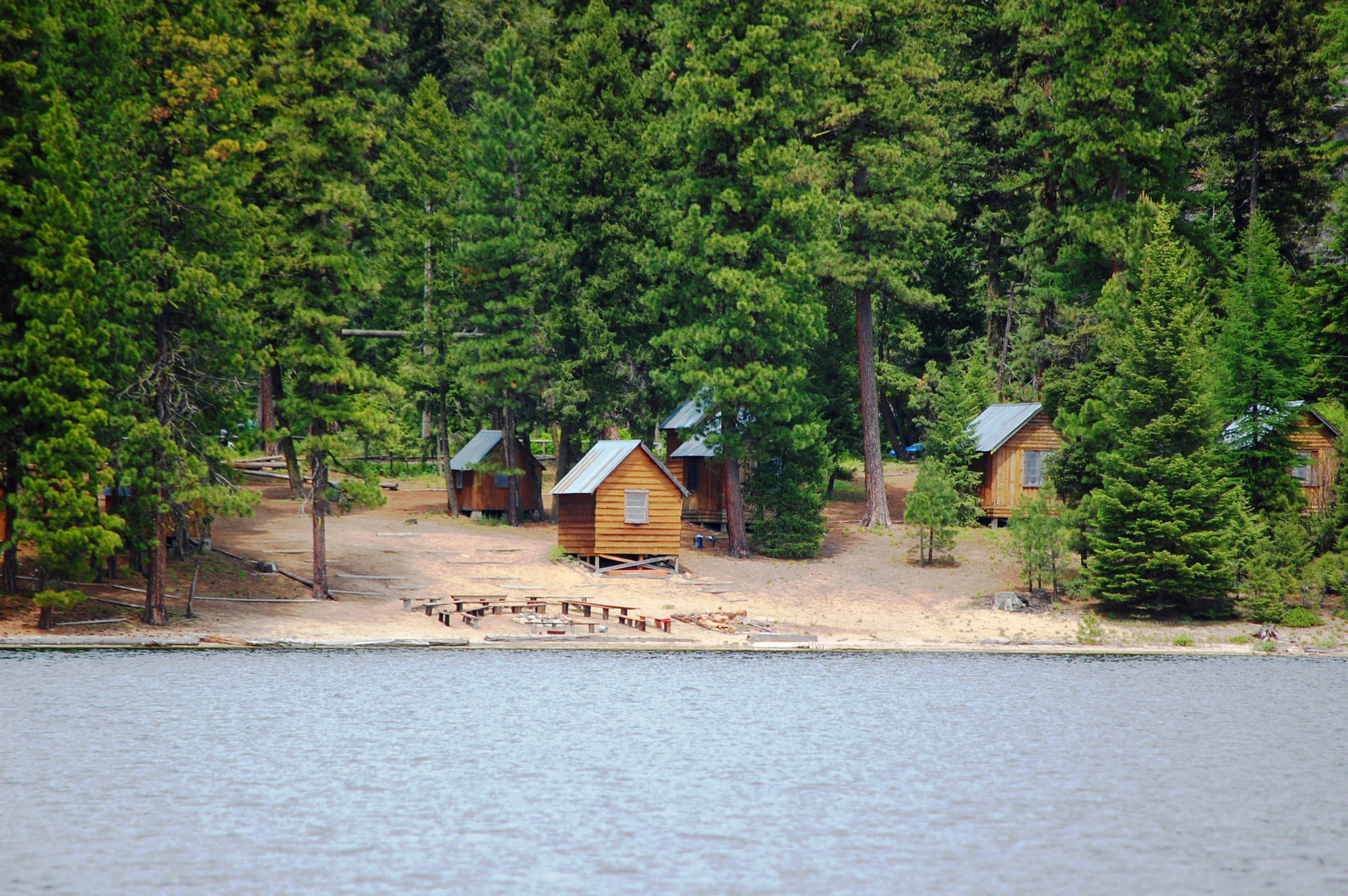The results of poor planning are not something you want to deal with as a Camp Owner — this probably means expensive lawsuits and major setbacks in the success and growth of your camp as a business. As a Camp director, you face the challenge of recognizing all the ways that your camping programs increase the risk of injury to campers and damages to your facilities.
The Rise of Camp Liability Lawsuits
In recent years, lawsuits against camp operators have become more frequent — and more expensive. From minor injuries to headline-making legal disputes like the Camp No Counselors lawsuit, courts are increasingly holding camp owners accountable for lapses in supervision, safety policies, and risk disclosure.
These issues don’t only apply to traditional summer camps. If you operate a retreat center, nature camp, or even a glamping site, your risk exposure can be significant. In fact, claims related to glamping site owner’s liability insurance are on the rise, especially when guests are injured by unfamiliar outdoor equipment or activities.
As a lawyer for camp owners, Sherr Law Group has helped facilities across Pennsylvania — from family-run camps to large commercial operations — develop strategies to prevent claims and respond effectively when they arise. Our team is familiar with the legal complexities specific to camp operations and can help you address them proactively.
Location-Specific Legal Support for Camp Owners
Each region in Pennsylvania presents unique risks and legal considerations for camp operations. From the Poconos to the Main Line, camp owners must navigate different local ordinances, insurance regulations, and zoning rules. That’s why it’s helpful to work with a PA camp liability lawyer who understands the challenges specific to your area.
For example, a Lansdale lawyer for camp owners may focus on issues related to land use and residential zoning compliance. A Bala Cynwyd lawyer for camp owners, on the other hand, might help address liability tied to school-affiliated camps or urban-adjacent retreats. And if your camp is based in a rural or mountainous area like Northeastern Pennsylvania, a Scranton lawyer for camp owners can guide you through unique insurance issues and emergency response protocols that are more common in remote environments.
Local legal counsel means more than just geographic proximity — it means tailored advice that reflects the rules, norms, and risk profile of your specific region.
Evolving Risk
Uncertainty in risk assessment makes it extremely difficult to understand the ever-evolving risks that change with the demands of each camping season. To provide the safest and best experience for your campers, as a Camp Owner, you need to anticipate the risks associated with your camp, and plan to minimize those risks. But, how do you even begin to figure this out?
Here are a few steps to help get you started with the risk management process.

Step 1: Risk Identification
Risk awareness and identification is the necessary first step in the risk management process. Ask yourself, “What can go wrong, and why does it matter?” The easiest way to begin to identify risks is to put yourself in the shoes of your campers, their families, and your staff. What will they be doing that carries a level of uncertainty or risk? Keep in mind the old adage, “When the cat is away, the mice will play.” Young adults and adolescents have a higher tolerance for risk-taking – especially when they are away from their parents.
It’s important to make these statements as consistent as possible. Use the format, “If [CAUSE], then [EFFECT] may occur, leading to [IMPACT].” As your camp risk management needs evolve, you’ll want a summary of potential risks that are easy to review and augment.
Plan out your risk so that it handles the tangible (e.g. buildings, automobiles, and equipment), as well as the intangible (e.g. reputation and copyrights) properties correctly. In addition, you need to look at the safety of relationships that develop between campers and staff.
Step 2: Assess Likelihood
From Step 1, you now have a preliminary list of identified risks. Now, determine how likely these risks are to happen and the impact they may have. Ask yourself, “How likely is it to happen, and what are the consequences of the event actually happening?”
Assign a likelihood (low, medium, high) to each risk, as well as a degree of impact (low, medium, high). You’ll see that risks come in many varieties – some things are very unlikely to occur, but create a high negative impact. Other risks are likely to occur but produce a very small impact. The worst risks are ones ranked with a high likelihood and a high impact. Conversely, the risks that need less attention are those ranked with a low likelihood and a low impact.
Step 3: Plan a Contingency to Manage Risks
Once your risks are properly and clearly defined, you’ll see your plan begin to take shape. The next step in the process is proactive Risk Management, which includes making decisions that reduce, transfer, or avoid the risk altogether.
Ways to Manage Risks
Reduce: Reduce the likelihood of the risks happening in the first place. Risk Reduction includes the use of protective equipment like seat belts and personal floatation devices, as well as consultations with camp safety specialists and lawyers.
Avoid: Avoiding risk means that you take actions to prevent the risk from happening altogether. Risk avoidance involves the establishment of rules and boundaries, like the necessary presence of at least two lifeguards before the waterfront is made openly accessible, or that no camp counselor is allowed to spend one-on-one time with a camper.
Transfer: Risk transfer mechanisms consist of the use of contracts stating the obvious risk and declaring oneself to be harmless and indemnified by the families of the campers. A common approach to transferring risk is buying an insurance policy, likely general liability insurance, which is the most common for camp owners.
Accept: Know that the risk may happen and deal with the consequences if the risk occurs.
At this point, you’ll have the following information for each risk you’ve identified:
- Risk
- Likelihood
- Degree of Impact
- Consequences
- Risk Control Strategy
Step 4: Control Risk
It’s important that you are actively reviewing your Risk Management Plan. Discuss risks at meetings and document the risks you know may occur. Create policies and procedures to keep campers and counselors safe from potential harm.
Prevention is better than a Cure
The ground-level steps that a camp owner can take as preventive measures against liability and lawsuits include:
- Maintaining and instituting adequate supervision of campers and counselors
- Explaining the campers and responsible parties of the potential dangers to ensure safety
- Supplying proper instructions about the rules and technicalities of all sports that could potentially cause damage
- Developing processes for inspecting and using proper equipment
- Providing a physically and emotionally safe environment for everyone on camp premises
Revisiting Your Insurance Coverage and Contracts
Risk transfer doesn’t stop with general liability insurance. Many camp owners overlook critical coverage gaps until it’s too late. For example, do you have professional liability insurance for staff who lead specialized activities like rock climbing, boating, or mental health counseling? If not, your existing policy might not provide full protection in a lawsuit.
Additionally, written waivers and releases should be updated regularly to reflect the specific activities your camp offers. Vague or outdated language won’t hold up in court. A lawyer for camp owners can help you assess whether your agreements provide meaningful protection under Pennsylvania law.
If your camp operates glamping facilities, yurts, or boutique lodges, consider working with a legal advisor familiar with glamping site owner’s liability insurance. These setups often involve more luxury-focused amenities, which can carry unique risks that standard camp policies don’t cover.
Insurance is a crucial layer in your risk strategy — but it’s only effective when it’s comprehensive, specific, and legally reviewed.
When to Call a Camp Liability Lawyer
Even with the best planning, incidents can still occur. When they do, it’s essential to act quickly and strategically. If a camper is injured, a counselor behaves inappropriately, or a parent threatens legal action, your first step should be to contact a PA camp liability lawyer.
Early legal guidance can prevent costly missteps — such as providing unnecessary statements to families or insurance adjusters. At Sherr Law Group, we offer immediate advice to camp owners facing potential legal exposure. Whether you operate near Lansdale, Scranton, Bala Cynwyd, or elsewhere in the state, we’re here to support you.
We also work directly with insurers to manage defense costs, preserve evidence, and determine the strength of a potential claim. Our experience representing camps throughout Pennsylvania means we can offer both practical risk advice and skilled litigation defense when necessary.
If you’re unsure whether an incident is serious enough to warrant legal help, err on the side of caution. Calling a lawyer for camp owners early can often mean avoiding a lawsuit entirely.
Injuries are an unfortunate reality that camp owners have to face, but they don’t have to ruin your camping operation. At The Sherr Law Group, we help camp owners identify and manage the risks inherent in owning and operating a camp. Sherr Law Group has successfully defended camps directly and through their insurance carrier on various liability claims. You can find out more about the firm’s services for Camp Owners and Directors.


